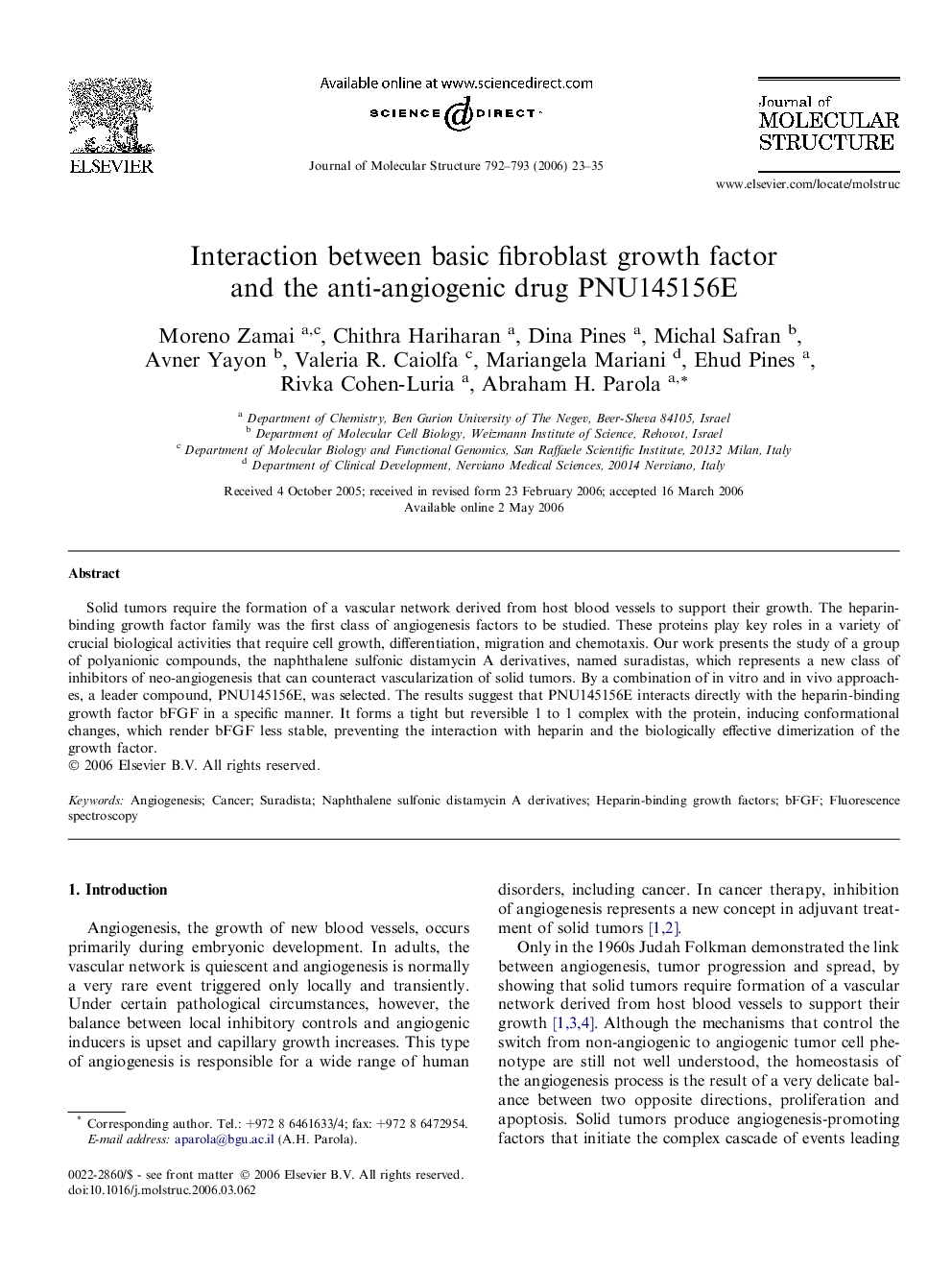| Article ID | Journal | Published Year | Pages | File Type |
|---|---|---|---|---|
| 1404588 | Journal of Molecular Structure | 2006 | 13 Pages |
Solid tumors require the formation of a vascular network derived from host blood vessels to support their growth. The heparin-binding growth factor family was the first class of angiogenesis factors to be studied. These proteins play key roles in a variety of crucial biological activities that require cell growth, differentiation, migration and chemotaxis. Our work presents the study of a group of polyanionic compounds, the naphthalene sulfonic distamycin A derivatives, named suradistas, which represents a new class of inhibitors of neo-angiogenesis that can counteract vascularization of solid tumors. By a combination of in vitro and in vivo approaches, a leader compound, PNU145156E, was selected. The results suggest that PNU145156E interacts directly with the heparin-binding growth factor bFGF in a specific manner. It forms a tight but reversible 1 to 1 complex with the protein, inducing conformational changes, which render bFGF less stable, preventing the interaction with heparin and the biologically effective dimerization of the growth factor.
